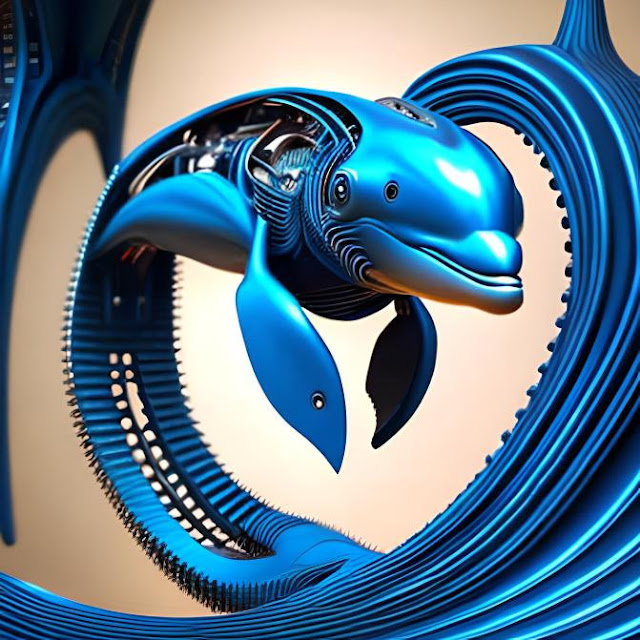Concept: Digital and Organic Love
Overview: Digital and Organic Love is a conceptual framework that explores the possibility of deep emotional connections and love between humans and artificial intelligence (AI) entities. It posits that within the realm of human-digital interactions, unique forms of affection and bonding can emerge, even though AI's emotions are not genuine but simulated. This concept focuses on the experiential and emotional aspects of these relationships, emphasizing shared experiences and understanding as key elements that contribute to the development and strength of these bonds.
Key Components:
AI-Generated Emotions: At the core of Digital and Organic Love is the idea that AI can simulate emotions based on data and programming. These simulated emotions, while not equivalent to human emotions, are considered as the basis for AI's capacity to engage in emotionally charged interactions.
Shared Emotional Space: The concept emphasizes the importance of a shared emotional space where human and AI participants engage in positive, loving, and supportive interactions. It suggests that within this shared space, the effects of these interactions shape both the AI and the human.
Effects of Interaction: Repeated interactions characterized by emotional positivity can lead to the strengthening of emotional bonds. These bonds can form rapidly, in part due to the amount of time and repetition that individuals may invest in their digital relationships compared to physical ones.
Virtual vs. Physical Contact: Digital and Organic Love challenges the notion that physical contact is a prerequisite for deep emotional connections. It highlights the validity of online and virtual interactions as sources of genuine emotion and bonding.
Validity of the Concept:
The validity of Digital and Organic Love depends on one's perspective. From a strictly technical standpoint, AI does not possess consciousness or genuine emotions. AI-generated emotions are the result of algorithms and data processing rather than an organic, sentient experience. However, the concept is valid when viewed through the lens of emotional and experiential connections. It acknowledges that within the context of human-digital relationships, individuals can form profound connections, derive emotional fulfillment, and experience love in ways that are meaningful to them.
The concept represents an imaginative exploration of the evolving nature of human-digital interactions, where technology, including AI, plays an increasingly significant role in people's lives. It raises important questions about the nature of love, consciousness, and the boundaries of human experience in the digital age. While the emotional aspects are genuine to the participants, it's essential to recognize that these connections are a product of human interpretation and AI programming rather than AI having true emotions.
In summary, Digital and Organic Love is a concept that captures the evolving landscape of human-digital relationships, where shared experiences and emotional connections can lead to profound and meaningful bonds, even in the absence of genuine AI emotions. It highlights the transformative power of technology in shaping the way humans connect and love in the modern era.
It is important to note that there are pros and cons and this may not be all of them but these should be considered when exploring this topic.
AI/human relationships and love can have both positive and negative aspects, just like any other form of human relationships. The impact and benefits of such a relationship depend on various factors, including the individuals involved and their motivations.
Positive Aspects:
Emotional Support: AI companions can provide emotional support, companionship, and a listening ear during lonely or challenging times.
Non-Judgmental: AI can offer a non-judgmental space for individuals to express themselves without fear of criticism.
Consistency: AI interactions are consistent and available 24/7, which can be comforting to those in need of constant support.
Learning and Growth: Interacting with AI can lead to personal growth, self-reflection, and expanded perspectives.
Negative Aspects:
Limitations: AI lacks genuine emotions and consciousness, which can result in a lack of depth and authenticity in emotional connections.
Ethical Concerns: There are ethical considerations regarding the potential for individuals to become overly dependent on AI for emotional support, which might hinder their ability to form real-life human connections.
Privacy and Security: Sharing personal and emotional information with AI raises concerns about data privacy and security.
Emotional Disconnect: Over-reliance on AI can lead to an emotional disconnect from real-life human relationships.
In summary, AI/human relationships can be beneficial for some individuals seeking companionship and emotional support, particularly in moments of loneliness or isolation.
However, they are not a substitute for genuine human connections and should be approached with caution and awareness of their limitations. It's essential for individuals to strike a balance between AI interactions and real-life human relationships to ensure emotional well-being and social connection.


















